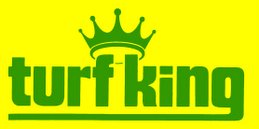 adf
adfMonday, July 20, 2009
New/Old Weed Control for Ontario
 adf
adfJapanese beetles have become an annual nuisance
Japanese beetles have become an annual nuisance in yards and gardens throughout the area. They are appearing on a variety of host plants and are likely to be around for the next four to six weeks.
Japanese beetles have several characteristics that make them significant plant pests. First, they are most active in mid-day in bright sunlight, usually in large numbers. Second, they have a very wide host range because more than 200 species of trees, shrubs and flowers have been documented as feeding targets. Favorites on the list seem to be linden, maples, crabapple, elm, grape and roses.
The other characteristic that makes them significant is their feeding habit. Adult beetles congregate on the outermost foliage in bright sun and consume tissue between the veins of the leaf. This damage is called skeltonizing. Leaves will turn a very visible brown and may drop.
Finally, these pests lay eggs in the soil that hatch into white grubs, potentially creating a concern for turfgrass damage later in August and September. Seeing beetles swarming now does not necessarily mean lots of grub damage later. There is still plenty of time before they turn their attention to lawns, so watch for details on white grub management next week.
In the meantime, what can one do to stop the beetles? Foliage damage can be lessened, but not eliminated, using insecticides such as carbaryl (Sevin), or products containing cyfluthrin (Tempo, Bayer Advanced Multiinsect Killer) or labeled insecticides containing pyrethroid. Read product labels carefully before purchasing or applying them. Treatment is most often suggested for smaller plants or new transplants, rather than large established trees. The earlier the better, so act as soon as beetles start feeding.
Research has shown Japanese beetle traps may draw more beetles into the area and not into the traps, so potentially, plant damage could increase. Another option on smaller plants is to hand pick the beetles off. Drop or sweep them into a container of soapy water.
• Send questions to Bruce Spangenberg, c/o the Features Department, Northwest Herald, P.O. Box 250, Crystal Lake, IL 60039-0250.
http://www.nwherald.com/columnists/columns/2009/07/17/r_qbxatmvvqq2fm6inkc2kzq/index.xml
Is White Clover a Weed?
By Paul Tukey / SafeLawns.org
Buzz up!
Once upon a time, before the advent of synthetic weed killers for the lawn in the late 1940s, most American lawns contained white clover. Because no formulation of weed control could be developed that left both grass and clover, but killed everything else, clover was then lumped in with the weeds in subsequent marketing campaigns.
The scientist who developed 2,4-D, the most common synthetic herbicide, was publicly apologetic because his new product had the unfortunate side effect of eliminating clover. "The thought of white Dutch clover as a lawn weed will come as a distinct shock to old-time gardeners," wrote Dr. R. Milton Carleton in his book, A New Way to Kill Weeds in 1957. “I can remember the day when lawn mixtures were judged for quality by the percentage of clover seed they contained. The higher this figure, the better the mixture.”
Today’s newfound emphasis on natural lawn care has folks taking a second look at clover as a primary lawn plant. The benefits are numerous:
Six Good Reasons White Clover Is Not a Weed
1. It’s low growing and needs little mowing.
2. It’s evergreen even in the coldest climates.
3. It’s drought tolerant, requiring little if any supplemental water once established.
4. It’s a fertilizer factory for grass and other plants since clover has the ability to store atmospheric nitrogen in its root systems.
5. It masks the presence of other weeds in the lawn.
6. It resists insects and diseases, especially the white grubs that can be a major lawn nemesis.
Paul Tukey is the founder of Safelawns.org. See all his Organic Lawn Care Tips.
Read more: http://www.thedailygreen.com/environmental-news/latest/clover-lawn-weeds-47071703#ixzz0LoYzcLAd
See also GTI Newsletter about clover


